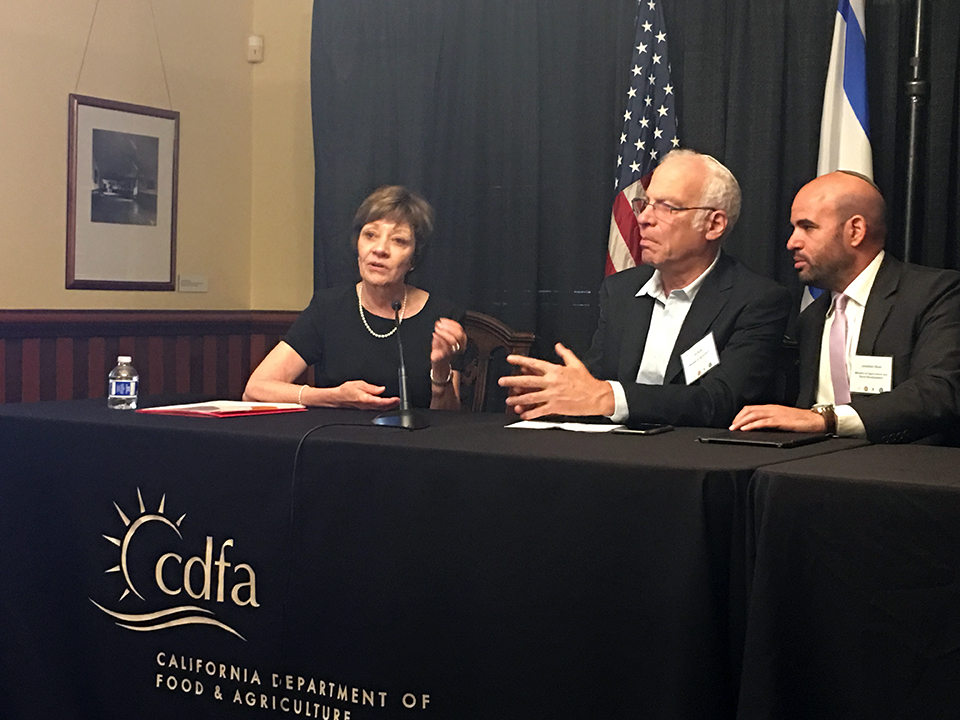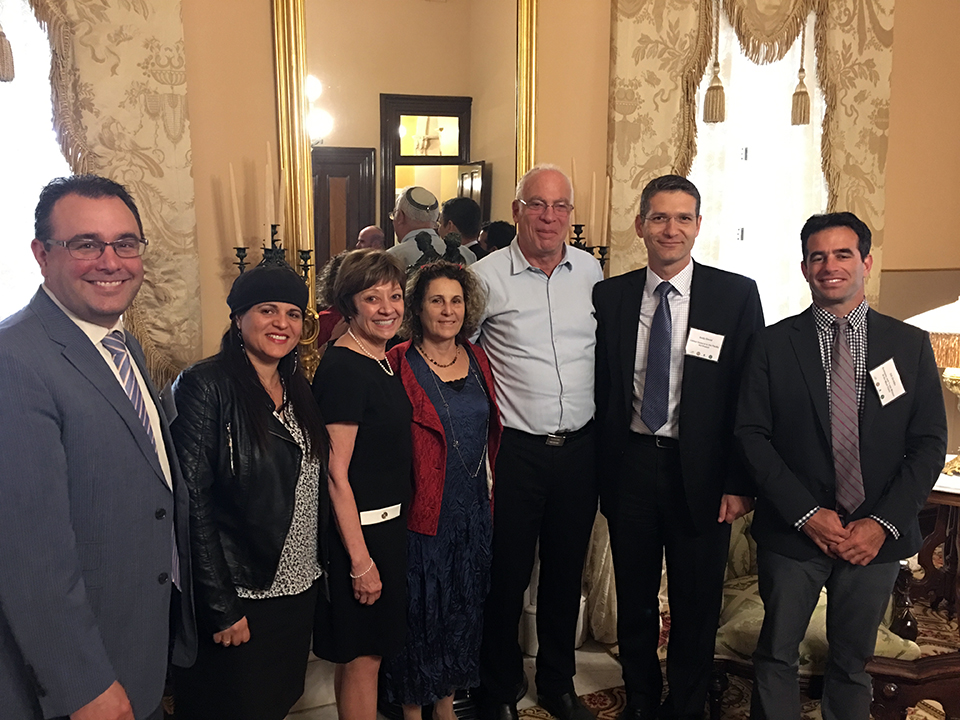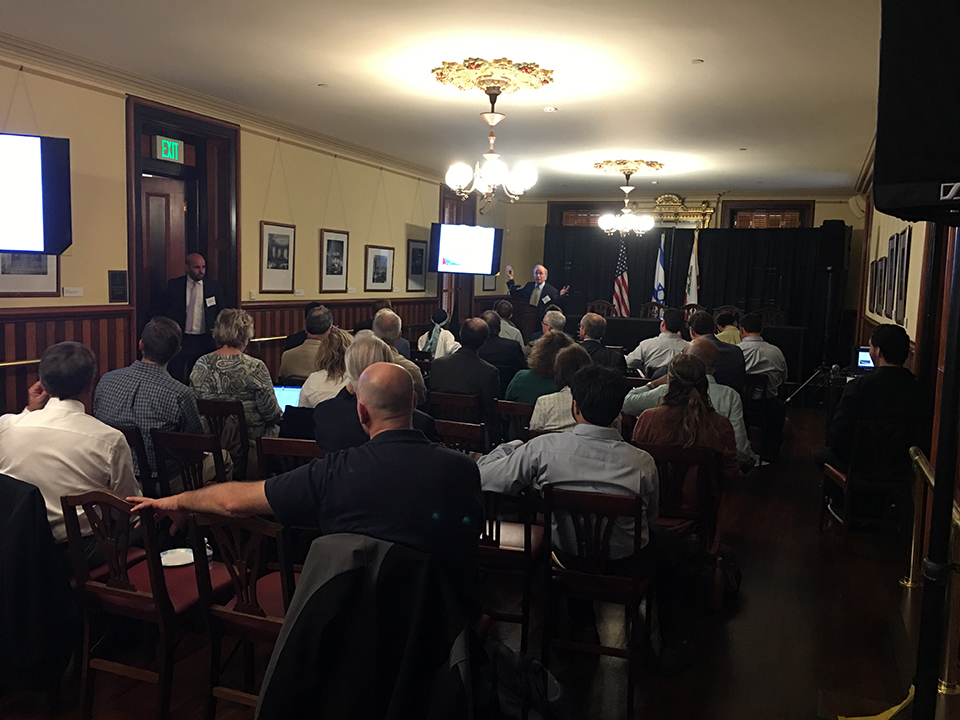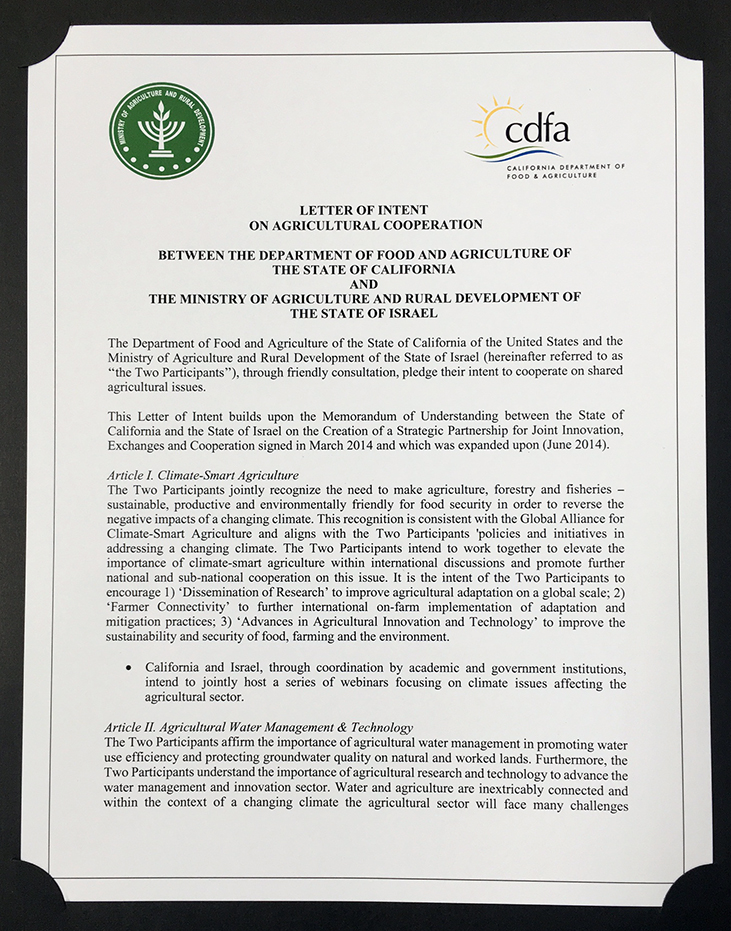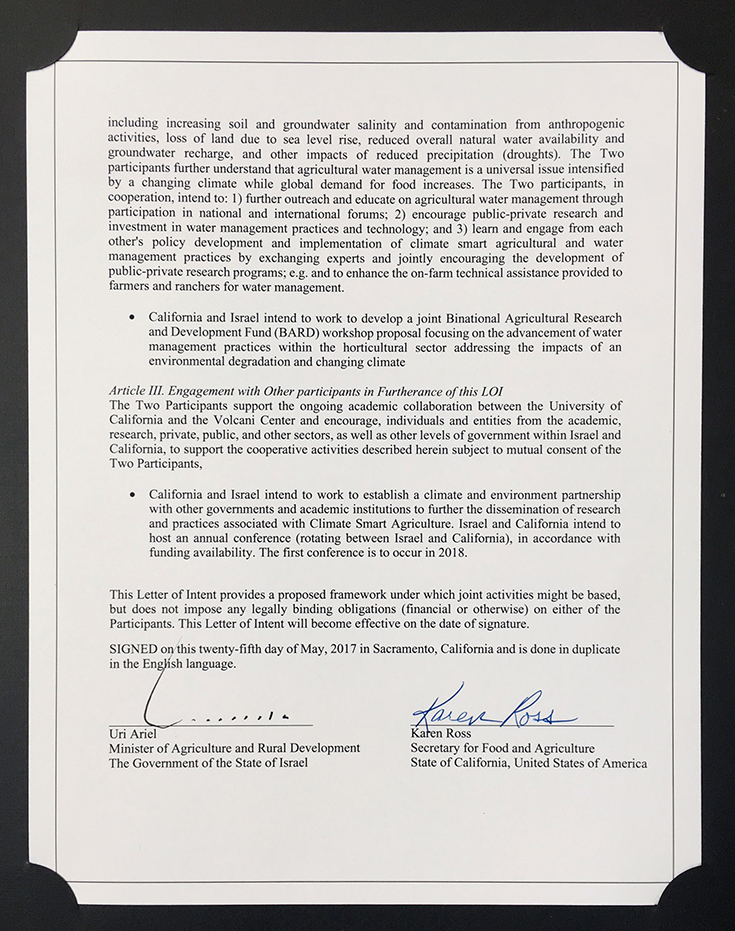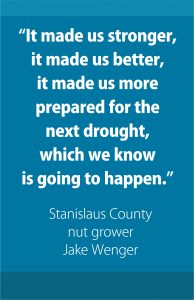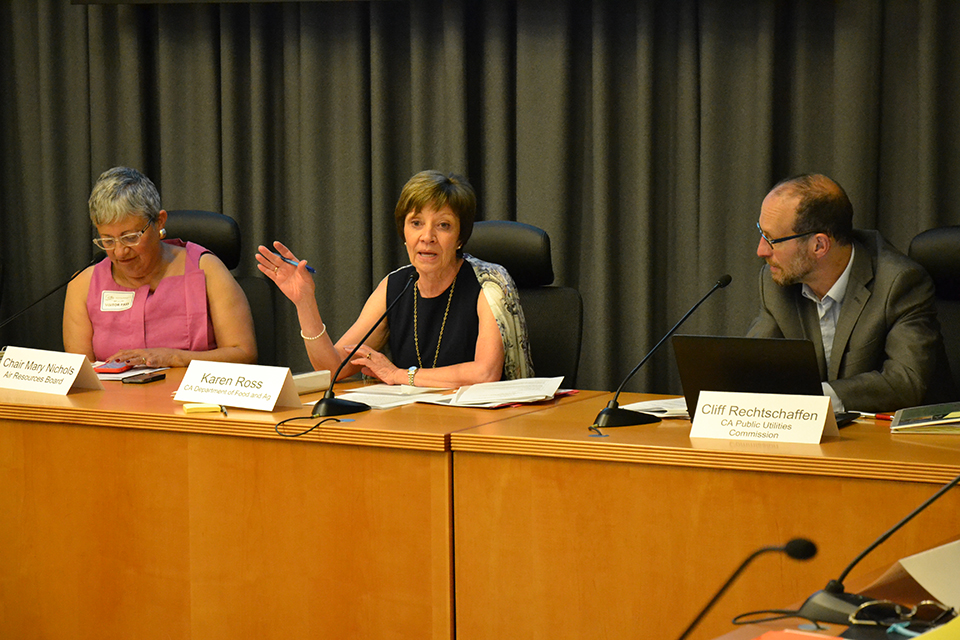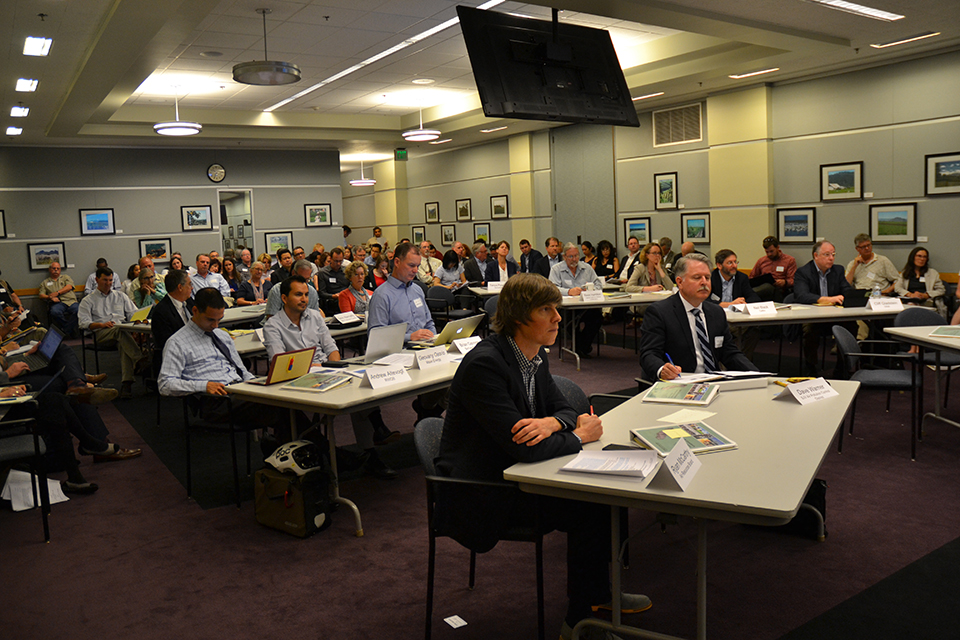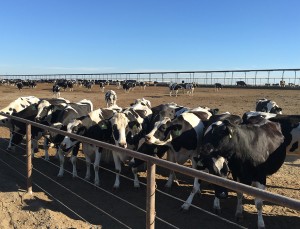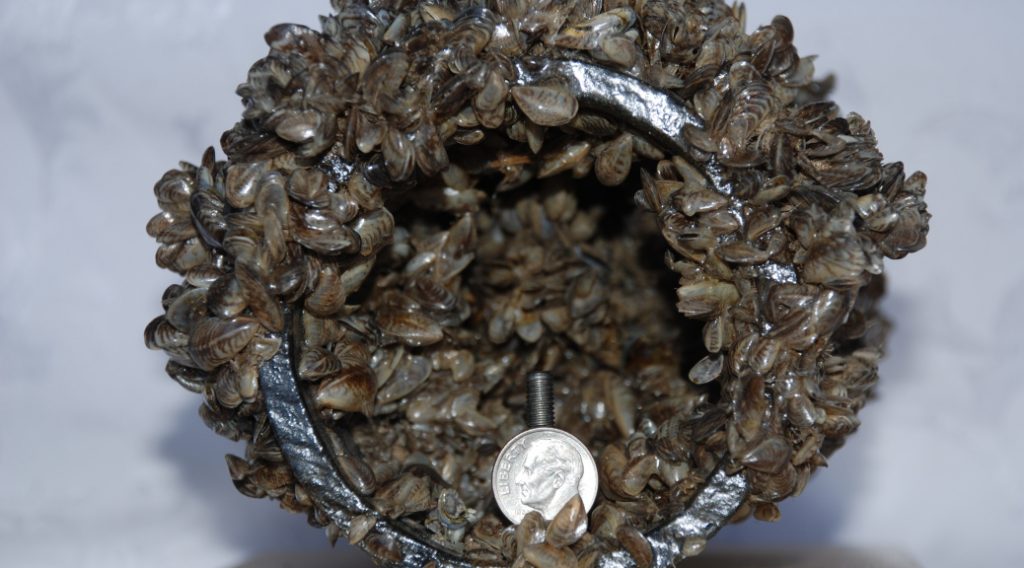
Invasive mussels spread to new bodies of water by attaching to watercraft. They multiply quickly and encrust pipes (above), pumping equipment and other components of water infrastructure. CDFA’s Border Inspection Stations are part of a cooperative, multi-agency effort that has inspected more than one million watercraft entering California over the past nine years, all aimed at preventing the introduction of quagga and zebra mussels into our waterways.
California agencies combatting the spread of invasive quagga and zebra mussels remind boaters to remain cautious over Memorial Day weekend.
Quagga and zebra mussels are invasive freshwater mussels native to Eurasia. They multiply quickly, encrust watercraft and infrastructure, alter water quality and the aquatic food web, and ultimately impact native and sport fish communities. These mussels spread from one body of water to another by attaching to watercraft, equipment and nearly anything that has been in an infested waterbody.
Microscopic juveniles, invisible to the naked eye, are spread from infested waterbodies in water entrapped in boat engines, bilges, live-wells and buckets. Quagga mussels have infested 31 waterways in Southern California and zebra mussels have infested two waterways in San Benito County.
To prevent the spread of these mussels and other aquatic invasive species, people launching vessels at any body of water are subject to watercraft inspections and are strongly encouraged to clean, drain and dry their motorized and non-motorized boats, including personal watercraft, and any equipment that contacts the water before and after recreating.
“The public plays a critical role in preventing the spread of quagga and zebra mussels,” said California Department of Fish and Wildlife (CDFW) Director Charlton H. Bonham. “The public should remember to Clean, Drain, and Dry their watercraft to prevent the further spread of quagga/zebra mussels, and other invasive species.”
To ensure watercraft are clean, drained and dry, many local agencies conduct boat inspections. The CDFW website provides a list of these inspection programs (www.wildlife.ca.gov/mussels), along with additional information about the invasive mussels and what people can do to help prevent their spread in California. Prior to traveling, boaters should contact destination waterbodies directly to check for restrictions and requirements.
Take the following steps both before traveling to and before leaving a waterbody to prevent spreading invasive mussels, improve your inspection experience and safeguard California waterways:
- CLEAN — inspect exposed surfaces and remove all plants and organisms,
- DRAIN — all water, including water contained in lower outboard units, live-wells and bait buckets, and
- DRY — allow the watercraft to thoroughly dry between launches. Watercraft should be kept dry for at least five days in warm weather and up to 30 days in cool weather.
CDFW has developed a brief video demonstrating the ease of implementing the clean, drain and dry prevention method, which can be viewed at www.youtube.com/watch?v=GaeAIPLoK-k. In addition, a detailed guide to cleaning vessels of invasive mussels is available on the CDFW’s webpage at https://nrm.dfg.ca.gov/FileHandler.ashx?DocumentID=4957&inline. Additional information is available on the Division of Boating and Waterways (DBW) website at http://dbw.parks.ca.gov/?page_id=28996.
Travelers are also advised to be prepared for inspections at California Department of Food and Agriculture (CDFA) Border Protection Stations. Over the past nine years, more than one million watercraft entering California have been inspected at the Border Protection Stations. Inspections, which can also be conducted by CDFW and California State Parks, include a check of boats and personal watercraft, as well as trailers and all onboard items. Contaminated vessels and equipment are subject to decontamination, rejection, quarantine or impoundment.
Quagga and zebra mussels can attach to and damage virtually any submerged surface. They can:
- Ruin a boat engine by blocking the cooling system and causing it to overheat
- Jam a boat’s steering equipment, putting occupants and others at risk
- Require frequent scraping and repainting of boat hulls
- Colonize all underwater substrates such as boat ramps, docks, lines and other underwater surfaces, causing them to require constant cleaning
- Impose large expenses to owners
A multi-agency effort that includes CDFW, DBW, CDFA and the California Department of Water Resources has been leading an outreach campaign to alert the public to the quagga and zebra mussel threats. A toll-free hotline, 1 (866) 440-9530, is available for those seeking information on quagga or zebra mussels.
See the original post on the CDFW News site here.



